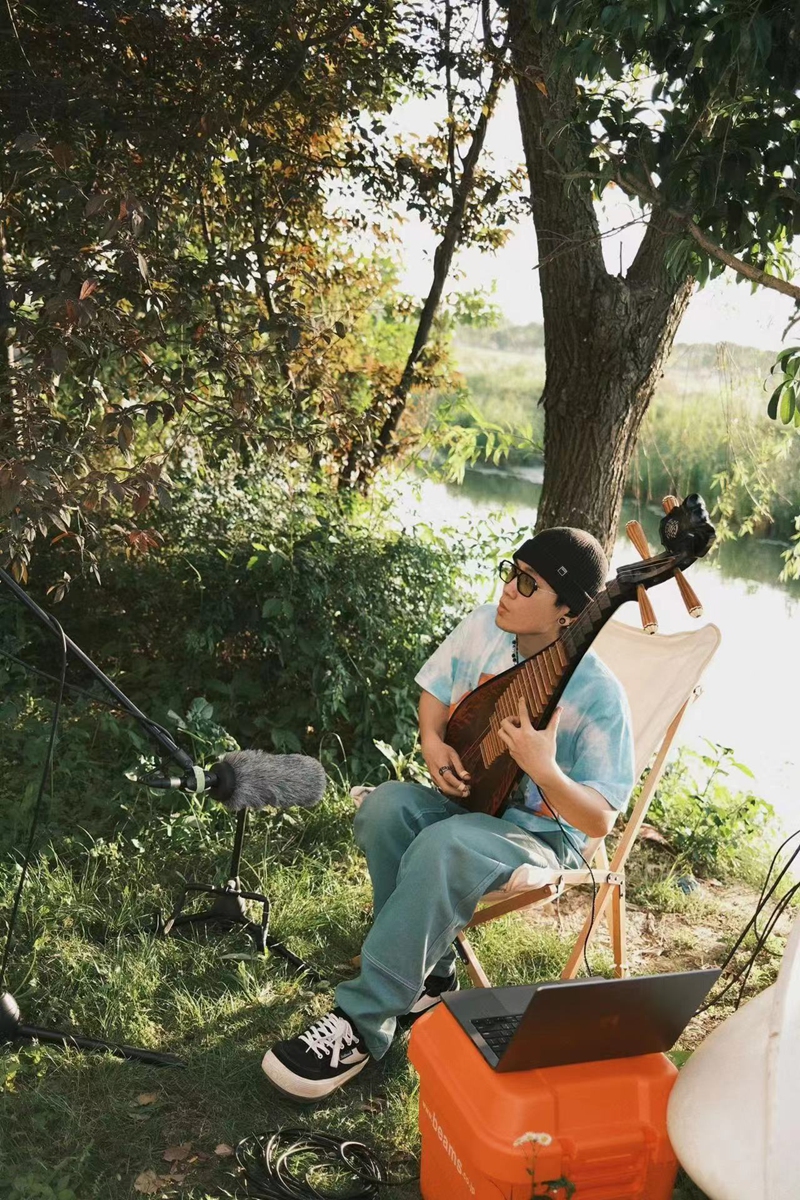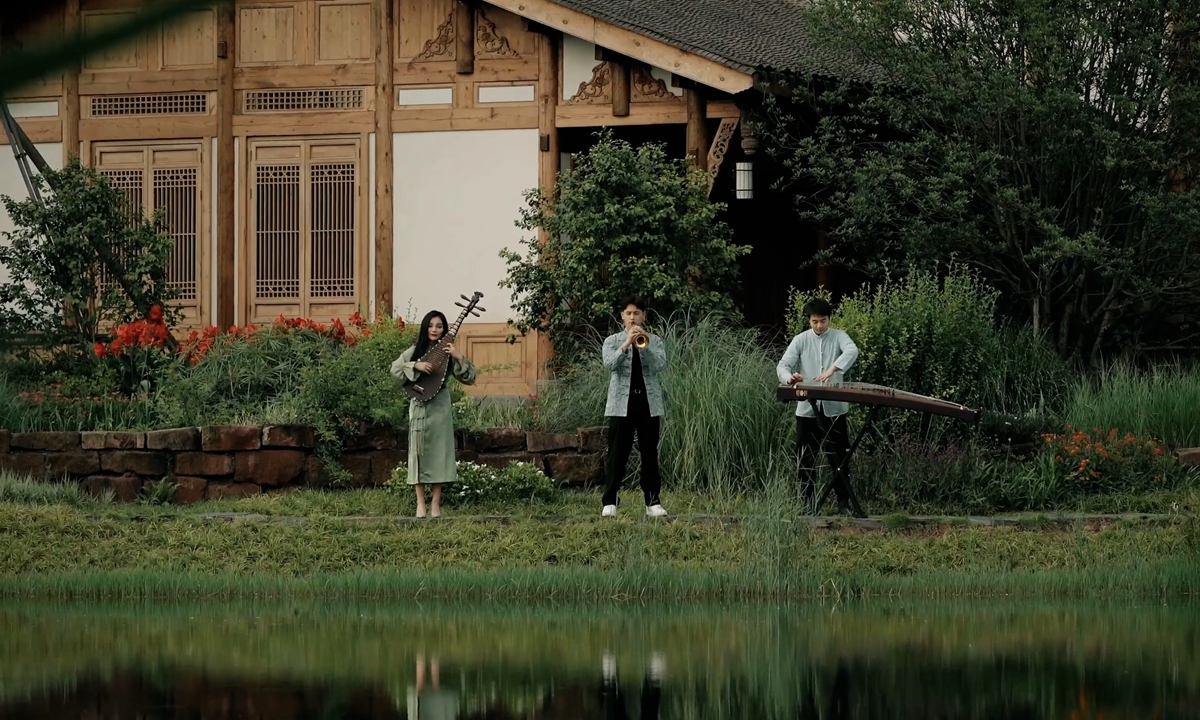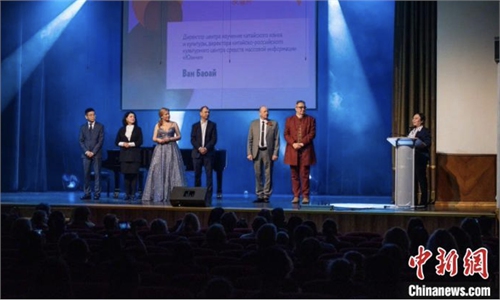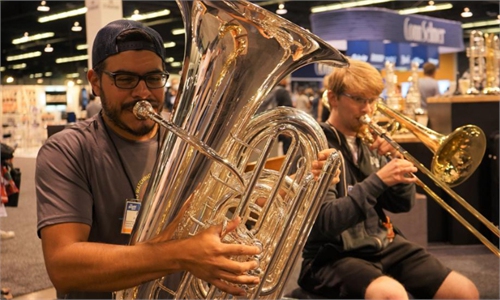ARTS / MUSIC
Creativity revitalizes traditional instruments

Marsix Photo: Courtesy of Marsix

Crazy Folk Photo: Courtesy of Crazy Folk
In a viral music video, a man wearing a black beanie and a pair of edgy sunglasses can be seen playing the traditional Chinese instrument pipa. However, the song he plays is far from traditional as he gives the sound of the instrument a funky vibe, which earned the video its title: Pipa Funk. The music video from young musician Marsix has gained him huge popularity since it was published on Chinese social media in May.The creator in Shanghai is not the only musician to combine traditional Chinese instruments such as pipa, suona and erhu with Western music genres such as hip-pop and electronic music. Their creativity has not only ignited young fans' love of classic Chinese music, but also inspired older performers to embrace popular youth culture so that such classic music legacies can be shared by the world.
Trendsetters
Pipa, also known as the Chinese lute, is a unique plucked instrument whose origins date back to more than 2,000 years ago. In 2008, it was listed as a national intangible cultural heritage in China.
Born to a musician family, Marsix started learning pipa when he was little. Later on, he first started his "pipa fusion" journey after learning how distinctive the instrument sounded in digitally programed music.
Marsix told the Global Times that after majoring in music production in university, he gradually discovered that the pipa music is a very versatile instrument that can be combined with many Western music genres such as jazz, hip-pop and even pop music.
"The instrument has a very unique sound that makes it very memorable, which is why it is a classic. But I think it is just a tool for musical language. I like those music genres, so I used it to express myself," Marsix told the Global Times.
In late April, he published his first music video, Pipa Spa, on China's social media platforms such as Bilibili. Marsix performs three minutes of pipa freestyle with chill beats.
He said that he never thought so many people would like the video.
"It made me realize how many people, especially young people, can sense the coolness of this traditional instrument," he noted.
Following that, he continued to produce other pipa fusions such as the songs "Pipa Dance" and "Pipa Hip-pop," which have earned him nearly 70,000 followers from various platforms.
Another such hot band Crazy Folk uploaded videos showing them playing trendy songs with a mix of Western and traditional Chinese instruments on top of skyscrapers and in ancient Chinese-style gardens and school playgrounds on the video channel of China's social media platform WeChat.
New perspective
Creators like Marsix are helping shape how people see these gems of traditional Chinese music.
"I was very surprised that this type of content has changed people's gender stereotypes toward pipa. Originally it was considered an instrument more for girl instrumentalists, so I was mocked as a boy for playing it. However, there are many male pipa players now," Marsix noted.
Chuanzi, a 29-year-old instrumentalist who combines suona and techno music, told the Global Times that according to old folk customs the instrument is played during funerals, but now he has many Gen Z fans contacting him in the hopes of learning the instrument.
The creativity of these young musicians has also inspired older folk performers to jump in on the trend.
Li Liangying, a veteran performer of Yunnan Province's cucurbit flute, told the Global Times that he was inspired by his son's pipa interpretation of the Chinese pop song "Lonely Warrior" to make his own pop music videos with the cucurbit flute.
"Actually, before these young kids, older people also worked to bring these classic instruments to the world stage," Li explained.
For instance, Guo Gan, a famous Chinese erhu veteran, made a name for himself overseas by performing an erhu version of Swan Lake on French TV.
Da Liang, a Chinese folk musician, noted that traditional Chinese instruments have continuously journeyed abroad, be it to ancient West Asia or Western countries today such as the US.
Originally, these iconic Chinese instruments, such as pipa and suona, were inspired by West Asian and East European instruments thousands of years ago. However, after centuries of in-depth localization in China, these instruments are gaining the attention of Western learners and inspiring major cultural centers like the Kennedy Center in the US to launch classes for them.
Liu Xiaohao, a post-1990s erhu musician, explained to the Global Times that there is no age or cultural gaps between performers in China.
A student of Cantonese music, Liu said that local fans of erhu in Shunde, Guangdong Province, often hold private parties where veteran and young musicians improvise and freestyle with each other.
"Older musicians very much enjoy playing for and talking to young people. They often learn from us what we learned in music academy. But, we also learn and try to 'steal' their masterful traditional skills and the classic ambience only folk artists can capture," Liu noted.
"If collaboration and creativity can allow our traditional culture to thrive, why would we reject this?"



